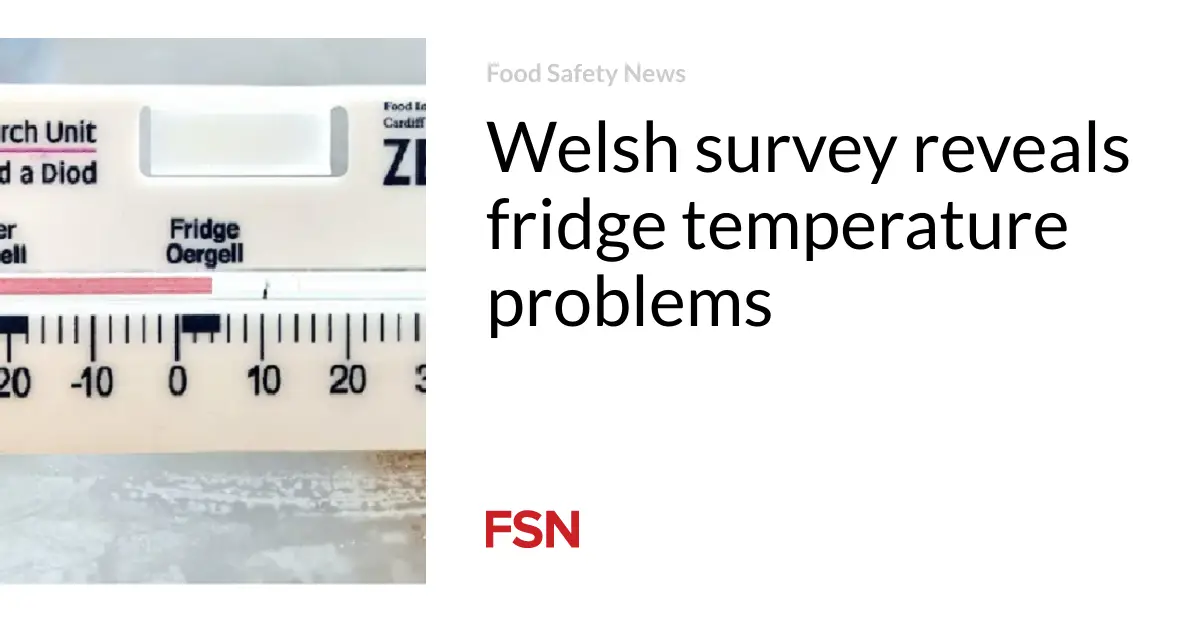
A study has found more than seven in 10 household refrigerators tested in Wales were operating at higher than the suggested safe temperature.
Food safety experts at the ZERO2FIVE Food and Drink Research Unit at Cardiff Metropolitan University conducted the research.
Findings revealed that 71 percent of fridges exceeded the recommended safe temperature of 5 degrees C (41 degrees F). Also, 37 percent of fridges in the study were running at 10 degrees C (50 degrees F) or higher.
Guidelines from the Food Standards Agency (FSA) advise that domestic refrigerators operate at 5 degrees C (41 degrees F) or below. Fridges above this temperature can increase the growth rate of foodborne bacteria such as Listeria monocytogenes, which can cause listeriosis.
Previous ZERO2FIVE research found that despite 79 percent of people surveyed believing refrigeration to be important, 84 percent were unaware of the safe operating temperature of a fridge.
Given this lack of awareness, researchers from ZERO2FIVE developed a citizen science project and distributed 1,175 fridge thermometers to the public at events in Wales. Participants were instructed to upload a photograph of the thermometer in their household fridge and record its operating temperature using an online tool.
Results prompt public actions
Of 201 participants, 90 percent reported not owning a refrigerator thermometer before participating in the study. Results showed that household fridge temperatures ranged from 0 to 20 degrees C (32 to 68 degrees F).
From 127 participants with fridge temperatures above 5 degrees C (41 degrees F), 80 percent were concerned about the potential for food poisoning bacteria growth and intended to adjust their fridge temperature. Another 18 percent said they would consider changing the settings, whilst only 2 percent were unconcerned and had no plans to modify their fridge temperature.
In total, 39 percent of the refrigerators were under five years old, 29 percent were between 5 and 10 years old, and 14 percent of participants didn’t know the age of their fridge.
Thirty-nine people lived in rented accommodations and didn’t own their refrigerators. The analysis found that 82 percent of those in rented accommodation had fridges at unsafe temperatures compared to 62 percent of those who lived in properties they owned.
Announcement of the results coincides with the Food and Agriculture Organization of the United Nations (FAO) and World Health Organization’s (WHO) World Food Safety Day, which takes place on June 7 every year. One of the WHO’s five keys to safer food is “keep food at safe temperatures,” which mentions the importance of correct refrigeration.
Dr. Ellen Evans, a reader in food safety behavior at ZERO2FIVE Food and Drink Research Unit, said the study had uncovered findings concerning household refrigerator temperatures.
“To ensure people are using their fridge at the right temperature and storing food safely, we’d recommend everyone uses a fridge thermometer, which is not expensive to buy, and then adjust their fridge controls to ensure it is operating at 5 degrees C or below,” she said.
“Our findings also demonstrate that citizen science research can help capture food safety data from the public, communicating key food safety messages, and promoting better food safety practices.”
Results were presented at the International Association for Food Protection’s (IAFP) European symposium in Geneva earlier this year. Some findings and another citizen science research project will be shown at the IAFP annual meeting in Long Beach, California, from July 14 to 17.
(To sign up for a free subscription to Food Safety News, click here.)







